Nicole schreibt...
Bremerhaven 2025 |
 |
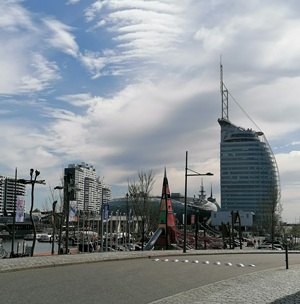 Once in a while a seemingly unpreposessing destination takes you by surprise and earns an unexpected spot in these travel reports. One such case is Bremerhaven far up north where the Weser river meets the North Sea. Once Germany's most important sea port and a major shipbuilding centre, it went into decline years ago with the closure of the old shipyards and maritime traffic moving on to Hamburg, so whenever Bremerhaven makes the news it's usually for all the wrong reasons such as one of the highest unemployment rates in Germany and most deprived areas. However in the last ten years they've started to make efforts to spruce the place up and turned the old decaying port area into a brand new quarter called Havenwelten - which got my attention for the sheer number of interesting new museums and other places around there. I did need a kick up the backside to actually go and see for myself and that kick arrived when one of my favourite musical performers turned up in a local production there.
And so on a surprisingly sunny warm early April day we were off to the north, where we had decided to also treat ourselves to the iconic new Atlantic Sail City hotel that is part of the Havenwelten and a blatant rip off of Dubai's Burj al Arab. Where we couldn't check in yet, so we just dropped our stuff and went to the port first for a walk around after the long drive and a proper Frisian Fischbrötchen (fish in bread roll). The beautiful three-master in the background is the MS Deutschland, long used as a teaching vessel by the German navy and now open to sightseers and events (and you can sleep on board):
Once in a while a seemingly unpreposessing destination takes you by surprise and earns an unexpected spot in these travel reports. One such case is Bremerhaven far up north where the Weser river meets the North Sea. Once Germany's most important sea port and a major shipbuilding centre, it went into decline years ago with the closure of the old shipyards and maritime traffic moving on to Hamburg, so whenever Bremerhaven makes the news it's usually for all the wrong reasons such as one of the highest unemployment rates in Germany and most deprived areas. However in the last ten years they've started to make efforts to spruce the place up and turned the old decaying port area into a brand new quarter called Havenwelten - which got my attention for the sheer number of interesting new museums and other places around there. I did need a kick up the backside to actually go and see for myself and that kick arrived when one of my favourite musical performers turned up in a local production there.
And so on a surprisingly sunny warm early April day we were off to the north, where we had decided to also treat ourselves to the iconic new Atlantic Sail City hotel that is part of the Havenwelten and a blatant rip off of Dubai's Burj al Arab. Where we couldn't check in yet, so we just dropped our stuff and went to the port first for a walk around after the long drive and a proper Frisian Fischbrötchen (fish in bread roll). The beautiful three-master in the background is the MS Deutschland, long used as a teaching vessel by the German navy and now open to sightseers and events (and you can sleep on board):
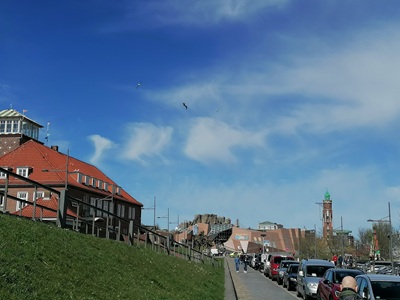
|
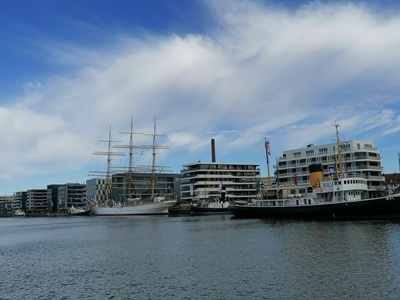 |
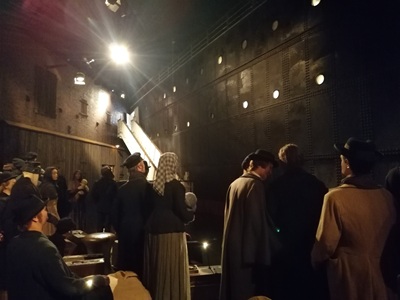 One of the new museums that had tickled me most was the German Emigration Museum, honoring the fact that a total of seven million passengers from Germany and Eastern Europe passed through the port of Bremerhaven on their way to the USA, Canada, Latin America or Australia and the museum ressembles their journeys - illuminating the many reasons for wanting to leave, their trips to the port and then the ocean crossing itself and finally the arrival at their destination.
The museum also jumped on the new gimmick to give everyone a real person whose journey to follow and after the serial wife on the Titanic I got a Jewish lady called Freida this time who seems to have ended up happy enough with a rich husband and a life in New York and Miami. While I did find her in the archives, I didn't bother to try and find my own useless ancestor who plodded off to America in 19th century to spawn a bunch of gun-toting rednecks in Arkansas.
One of the new museums that had tickled me most was the German Emigration Museum, honoring the fact that a total of seven million passengers from Germany and Eastern Europe passed through the port of Bremerhaven on their way to the USA, Canada, Latin America or Australia and the museum ressembles their journeys - illuminating the many reasons for wanting to leave, their trips to the port and then the ocean crossing itself and finally the arrival at their destination.
The museum also jumped on the new gimmick to give everyone a real person whose journey to follow and after the serial wife on the Titanic I got a Jewish lady called Freida this time who seems to have ended up happy enough with a rich husband and a life in New York and Miami. While I did find her in the archives, I didn't bother to try and find my own useless ancestor who plodded off to America in 19th century to spawn a bunch of gun-toting rednecks in Arkansas.
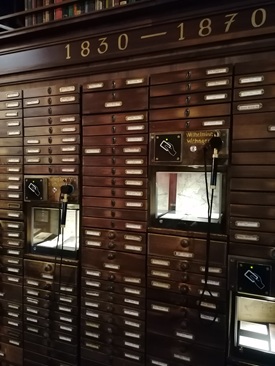
|

|
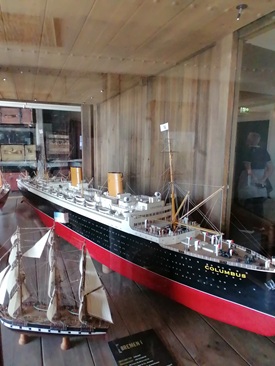 |

|
 |
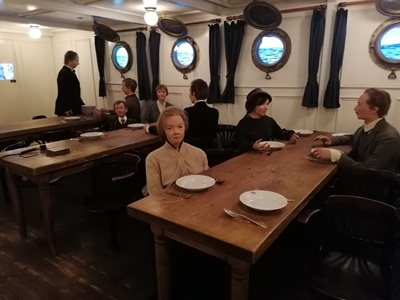
|
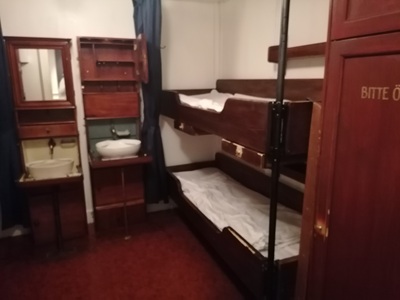 |
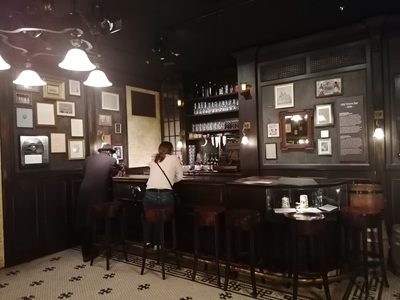
The journey continued with disembarkation in the port of destination and in this case a replica of a holding area in Ellis Island, where you could check whether you'd pass the test to be let into the country (with some dumb questions that are still very much the same in ESTA these days) and a recreation of (a part of) Grand Central Station in New York which for so many was the gateway to their new lives. And finally some examples of these new lives: A German pub where homesick immigrations congregated to whine into their beers and wursts, a typical sweatshop of New York City, where mostly Jewish immigrants worked in the textile industry and a cute little grocer's store filled with vintage cans and packages of typical American products.

|
 |
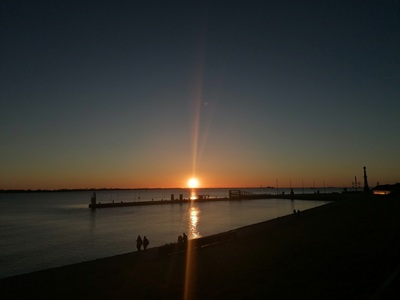
|
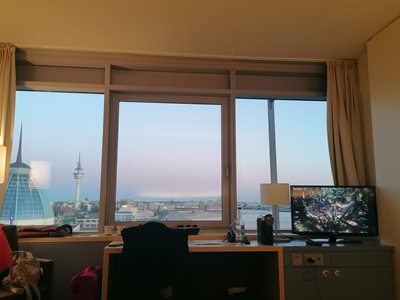 |
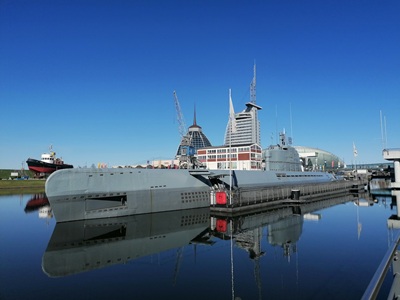
More was still to come the next morning though, because the maritime geek in me was also very keen on visiting the German Maritime Museum. But before that we stopped to visit the submarine vessel Wilhelm Bauer, the last class of U-Boats Hitler had built towards the end of WWII. The war was over before it could see any action and the crew sank it to avoid it falling into the enemy's hands. In 1957 they dredged her up, first for the modern German navy to practise in and finally as a museum vessel. I swear that until you have actually been inside one of those things, you cannot envision just how cramped and awful it is inside and the very thought to be deep under water in this alone freaks me out - the Eurotunnel is bad enough for me. Definitely a very interesting thing to visit and one that will stay with me.
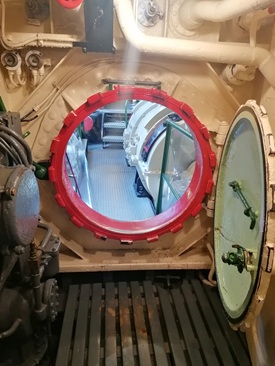
|
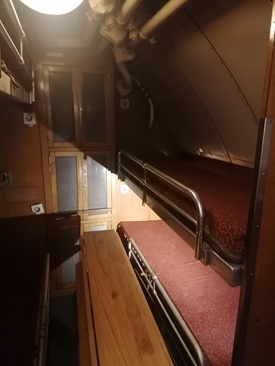
|
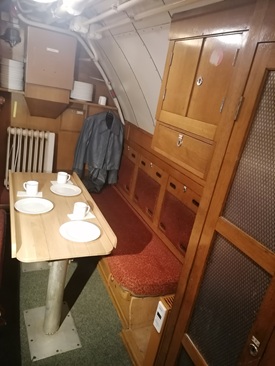 |
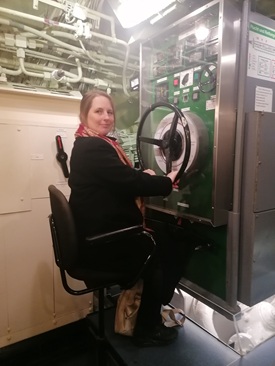
|

|
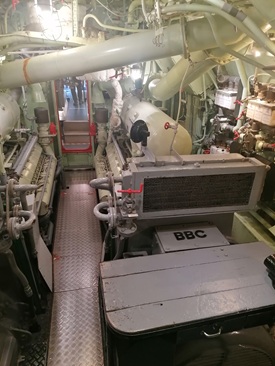 |
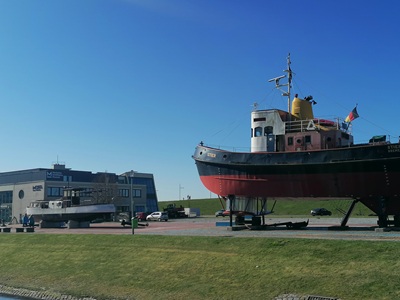
After this fascinating overture it was time to move on to the German Maritime Museum which consists of two exhibition halls and half a dozen old ships that are either still in the water or propped up like the tug boat in this picture. The first hall contained a large exhibition on shipbuilding through the ages with a special view on Bremerhaven's own development as Germany's major shipbuiding town as well as a department on modern exploration vessels and some general stuff on seafaring and fishing. Admittedly quite a bit of the nautical and mathematical stuff went over my head but it was still rather informative. You could try and steer a modern vessel safely into a harbour without crashing into anything (yea right) and admire nimble sailors'fingers who can create all these knots and then some.
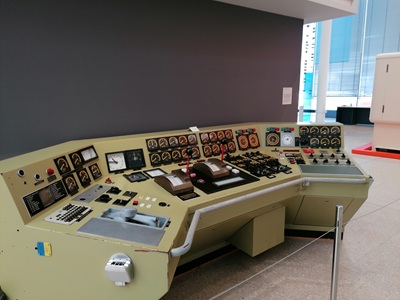
|
 |
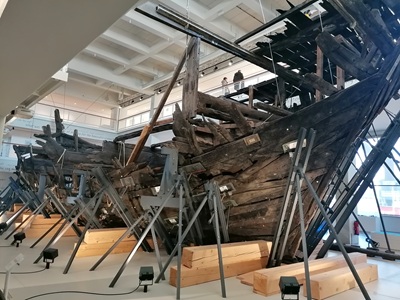
The main event is waiting in the second hall though, the Bremer Kogge - the remains of a 14th century cog that was found in the Weser in Bremen and put back together. There was an epic row because Bremen itself couldn't be bothered to give it a good home, so Bremerhaven offered to do just his as the new star attraction of the museum. The actual wreck was surrounded by some information on where it was found as well as some of the medieval maritime trade of the Hanse, which, for me as an history geek, was actually a bit more interesting than all the stuff on shipbuilding. Here's a model of what the cog probably looked like and what's apparently the oldest still existing ship's bog in the world (which in those days was attached outside so that enterprising seafarers could do their business right into the sea).

|
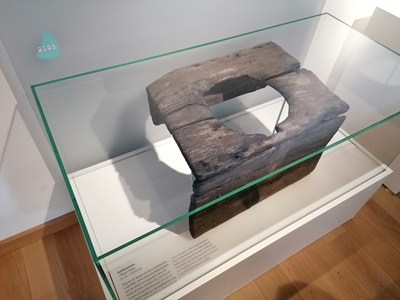 |
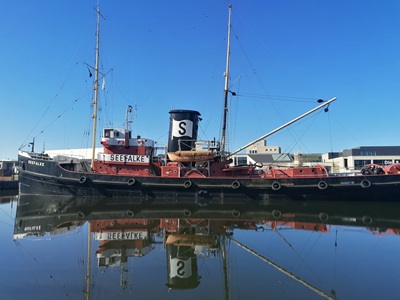 Last item on the list was the biggest of the ships outside in the museum port, which used to be a salvage and rescue vessel built for stormy waters, the Sea Hawk. It was also quite interesting to see but after the steerage cabins at the Emigration Museum and the U-Boat this ship almost felt like a luxury cruise liner.
I also pretty exhausted and glad when we collapsed into a Strandkorb at fancy Gosch (a seafood chain originating on Germany's most snobby jetset island Sylt) for lunch and a break before it was finally showtime at the local Stadttheater Bremerhaven, where my beloved Swiss blondie Tobias Bieri played the lead in "Catch me if you can" (once a movie with Leonardo di Caprio and Tom Hanks), While the show itself was okayish at most, Bremerhaven had truly met and even surpassed my expectations and there would have been plenty more things to see and do there. We were also infinitely lucky with gorgeous spring weater, so all in all it was truly a perfect weekend out...
Last item on the list was the biggest of the ships outside in the museum port, which used to be a salvage and rescue vessel built for stormy waters, the Sea Hawk. It was also quite interesting to see but after the steerage cabins at the Emigration Museum and the U-Boat this ship almost felt like a luxury cruise liner.
I also pretty exhausted and glad when we collapsed into a Strandkorb at fancy Gosch (a seafood chain originating on Germany's most snobby jetset island Sylt) for lunch and a break before it was finally showtime at the local Stadttheater Bremerhaven, where my beloved Swiss blondie Tobias Bieri played the lead in "Catch me if you can" (once a movie with Leonardo di Caprio and Tom Hanks), While the show itself was okayish at most, Bremerhaven had truly met and even surpassed my expectations and there would have been plenty more things to see and do there. We were also infinitely lucky with gorgeous spring weater, so all in all it was truly a perfect weekend out...
Copyright © All Rights Reserved